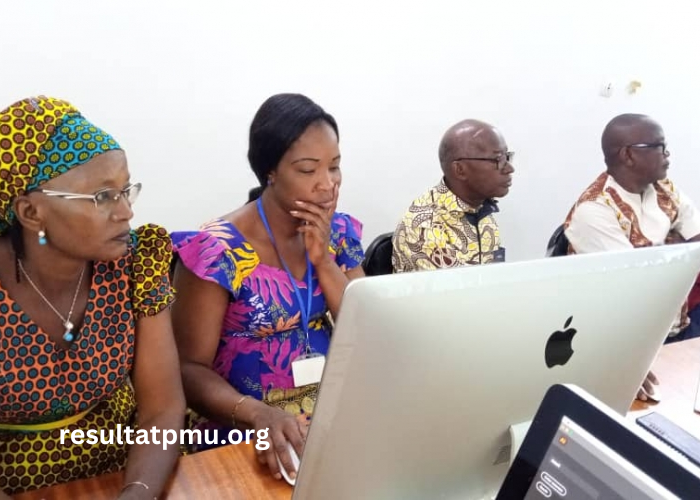In the dynamic world of horse racing, finding the right tools and strategies can significantly impact your success. “DGMP GOV BF” is a key concept in this domain, offering bettors valuable insights and strategies for making informed decisions. In this detailed guide, we will explore what “DGMP GOV BF” is, how it can be used to enhance your horse racing betting strategies, and offer expert tips and techniques for success.
What is “DGMP GOV BF”?
“DGMP GOV BF” refers to a specialized approach and set of tools used in horse racing betting. It combines advanced data analysis, government-provided resources, and betting frameworks to create a comprehensive betting strategy.
1. Breaking Down the Acronym:
- DGMP: Data and Government Monitoring Program. This refers to the use of official data and monitoring programs to analyze horse racing results.
- GOV: Government Resources. This involves leveraging resources and information provided by government bodies overseeing horse racing.
- BF: Betting Framework. This refers to the strategies and methods used for placing bets and managing betting activities.
2. Components of “DGMP GOV BF”:
- Data Analysis: Utilizing race data to understand trends and performance metrics.
- Government Resources: Accessing official race results, statistics, and regulations.
- Betting Strategies: Developing effective betting frameworks and approaches.
Why Use “DGMP GOV BF”?
“DGMP GOV BF” offers several advantages for horse racing bettors, including access to reliable data, improved betting strategies, and enhanced decision-making capabilities.
1. Access to Reliable Data:
- Official Race Results: Access up-to-date and accurate race results from government sources.
- Example: You can view the latest race outcomes, including positions, times, and odds, from official platforms like France-Galop.
2. Improved Betting Strategies:
- Data-Driven Decisions: Use data analysis to develop and refine your betting strategies.
- Example: Analyze past performances of horses, jockeys, and trainers to predict future outcomes.
3. Enhanced Decision-Making:
- Comprehensive Insights: Gain a deeper understanding of race conditions, horse performance, and betting opportunities.
- Example: Evaluate how track conditions impact race results and adjust your bets accordingly.
How to Access “DGMP GOV BF” Resources
To effectively use “DGMP GOV BF”, you need to access various resources and tools. Here’s how you can get started:
1. Official Government Websites:
- Visit Official Sites: Explore government websites for race results, statistics, and regulations.
- Example: France-Galop and PMU.fr offer detailed race information and official data.
- How to Access: Go to the “Résultats” or “Statistiques” sections to find the latest race results and performance data.
2. Data Analysis Tools:
- Utilize Analysis Software: Use tools for analyzing race data and trends.
- Example: Software like Timeform and Racing Post provide detailed race analysis and predictions.
- How to Use: Enter race results into the software to generate statistical analyses and betting predictions.
3. Betting Platforms:
- Explore Betting Options: Access platforms for placing bets and exploring betting markets.
- Example: Bet365 and Unibet offer a range of betting options and market insights.
- How to Use: Use these platforms to place bets, view odds, and monitor betting trends.
4. Horse Racing Forums and Communities:
- Join Discussions: Engage with other bettors and experts to share tips and insights.
- Example: The Racing Forum and Horse Racing Nation are great places to connect with the community.
- How to Find: Search for forums and social media groups focused on horse racing and betting strategies.
Analyzing “DGMP GOV BF” Data for Betting Success
To make the most of “DGMP GOV BF”, it’s essential to know how to analyze and interpret the data effectively. Here’s a step-by-step guide:
1. Review Race Results:
- Check Finishing Positions: Look at which horses finished in the top three positions.
- Example: After a race, review the results to see if your selected horses performed as expected.
- How to Analyze: Compare the positions of your horses with the final results to evaluate your betting choices.
2. Analyze Race Times and Conditions:
- Compare Times: Examine the times of different horses to understand their speed and performance.
- Example: If Horse A had a faster time than Horse B, Horse A might be a better bet in similar conditions.
- How to Analyze: Look at the times and track conditions to see how they impacted the race results.
3. Evaluate Odds and Payouts:
- Compare Odds: Assess if the odds offered for horses were reflective of their actual performance.
- Example: If an underdog horse won despite high odds, investigate the factors behind this outcome.
- How to Analyze: Review the odds and payouts to understand how well the betting markets predicted the results.
4. Study Performance Trends:
- Identify Trends: Look for patterns in horse, jockey, and trainer performances.
- Example: If a jockey consistently performs well, this information can guide future bets.
- How to Analyze: Track performance over time and identify any recurring trends or patterns.
5. Assess Track Conditions:
- Understand Impact: Consider how track conditions affected race outcomes.
- Example: Horses that perform well on a wet track may struggle on a dry track.
- How to Analyze: Review race conditions and their impact on the horses’ performances.
Advanced Techniques for “DGMP GOV BF”
For more experienced bettors, advanced techniques can provide deeper insights and improve betting strategies.
1. Develop Predictive Models:
- Create Models: Build statistical models to forecast future race outcomes based on historical data.
- Example: Develop a model using regression analysis to predict race results.
- How to Do It: Use tools like R or Python for statistical modeling and data analysis.
2. Leverage Betting Systems:
- Apply Systems: Implement structured betting systems to manage bets and maximize profits.
- Example: Use systems like the Martingale Strategy or Kelly Criterion for betting.
- How to Do It: Research different systems and adapt them to your analysis of race results.
3. Track Long-Term Performance:
- Analyze Over Time: Evaluate horse and jockey performances over an extended period.
- Example: Track performances for several months to understand consistency and trends.
- How to Do It: Maintain detailed records of race results and performance metrics.
Strategies for Effective Betting with “DGMP GOV BF”
To enhance your betting success, here are some effective strategies to implement:
1. Focus on Consistency:
- Bet on Reliable Performers: Choose horses, jockeys, and trainers with a track record of consistent performance.
- Example: If a horse consistently finishes in the top three, consider it for future bets.
2. Analyze Recent Success:
- Capitalize on Wins: Use recent successes to guide your future betting decisions.
- Example: A horse with a string of recent victories might be a strong bet.
3. Diversify Your Bets:
- Mix Bet Types: Combine different types of bets to cover more outcomes.
- Example: Place Trio bets alongside Win and Place bets.
4. Explore Different Betting Markets:
- Try Various Markets: Look for opportunities in different betting markets.
- Example: Explore markets like Exacta, Quinella, and Forecast.
5. Stay Updated with Race Conditions:
- Monitor Conditions: Adjust your bets based on changing track conditions and weather.
- Example: A horse that performs well in wet conditions might struggle on a dry track.
Final Thoughts
“DGMP GOV BF” is a powerful concept for anyone looking to enhance their horse racing betting strategies. By leveraging government data, applying advanced analytical techniques, and exploring effective betting frameworks, you can make more informed decisions and improve your chances of success.




